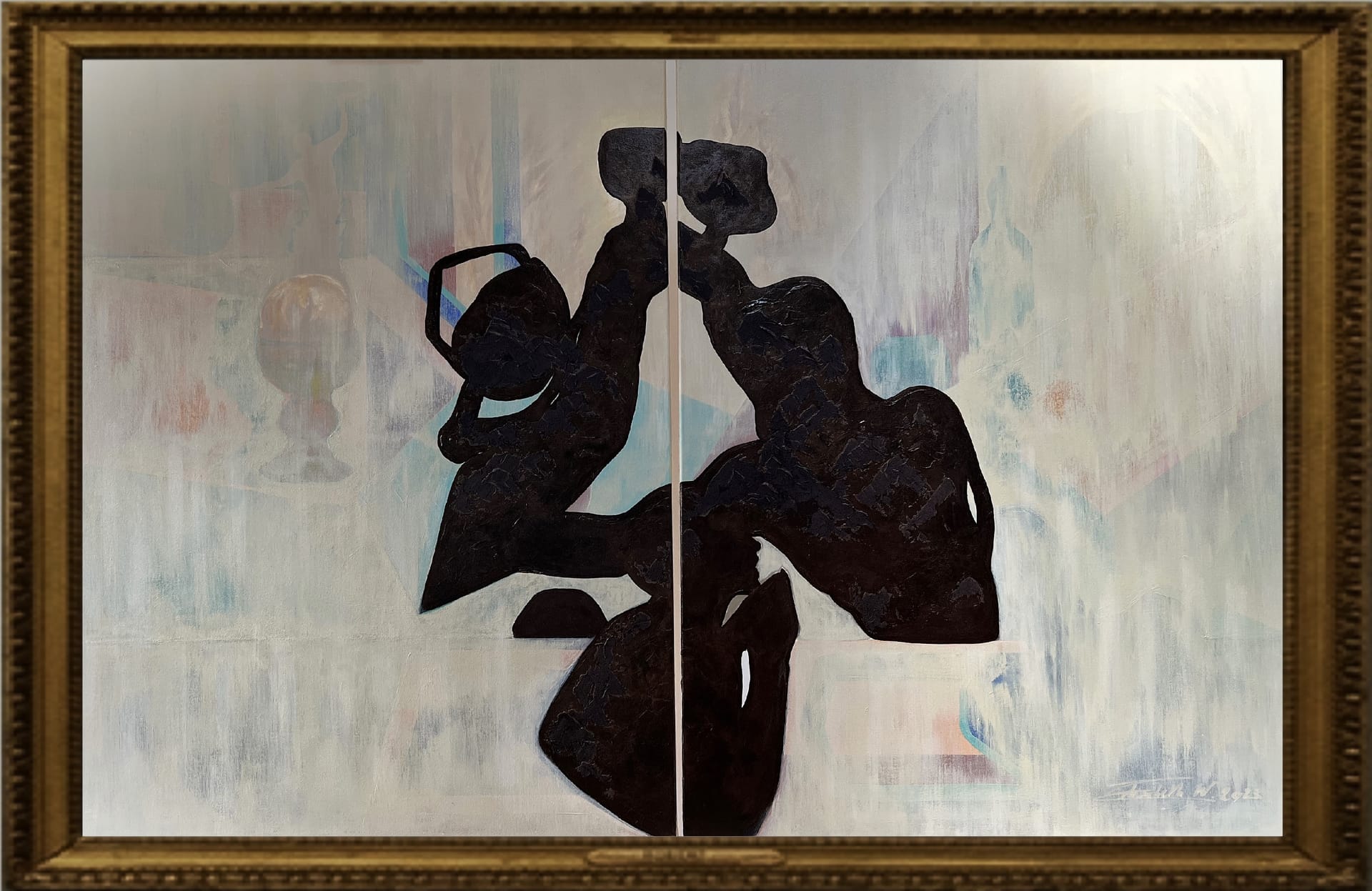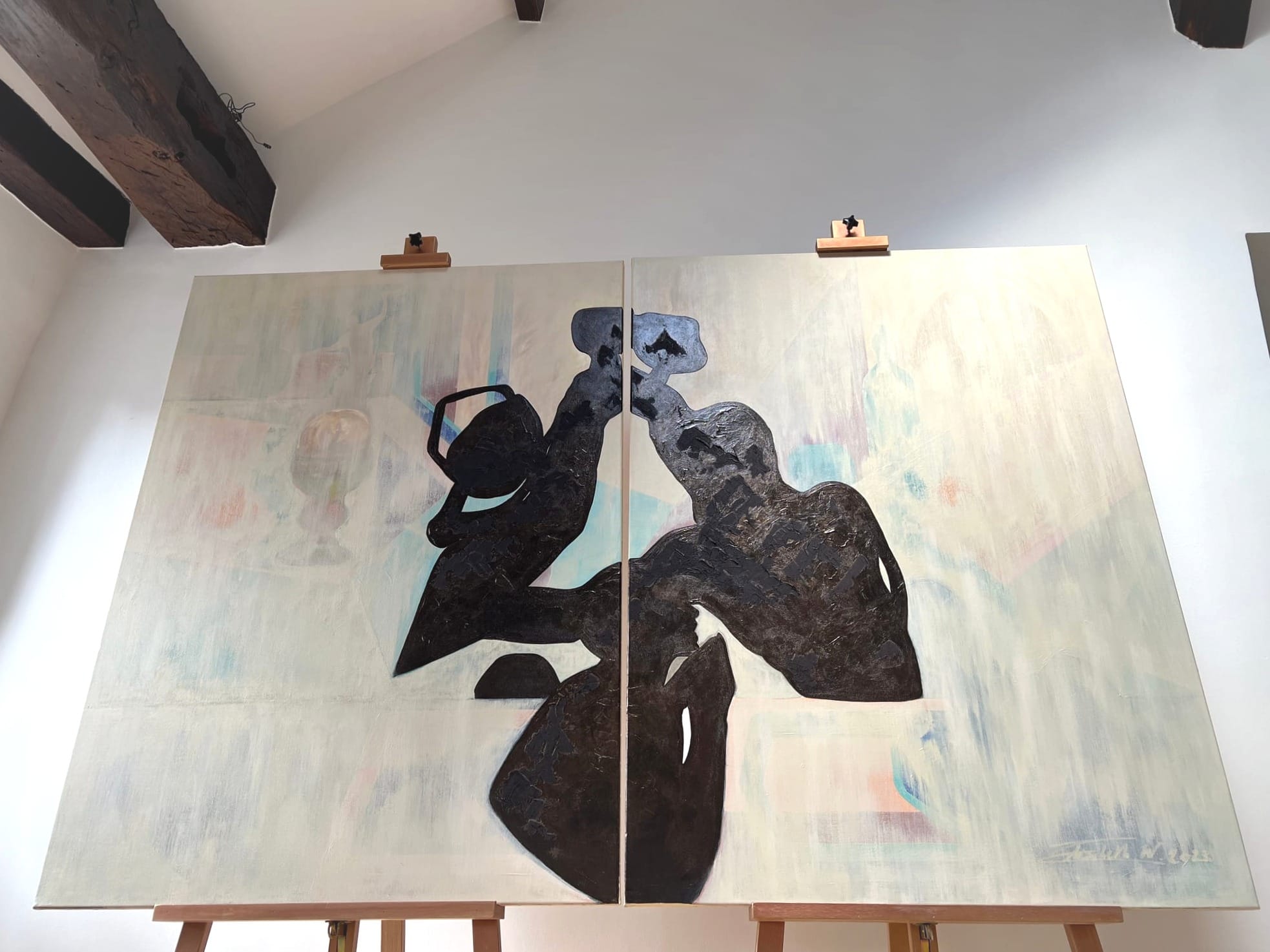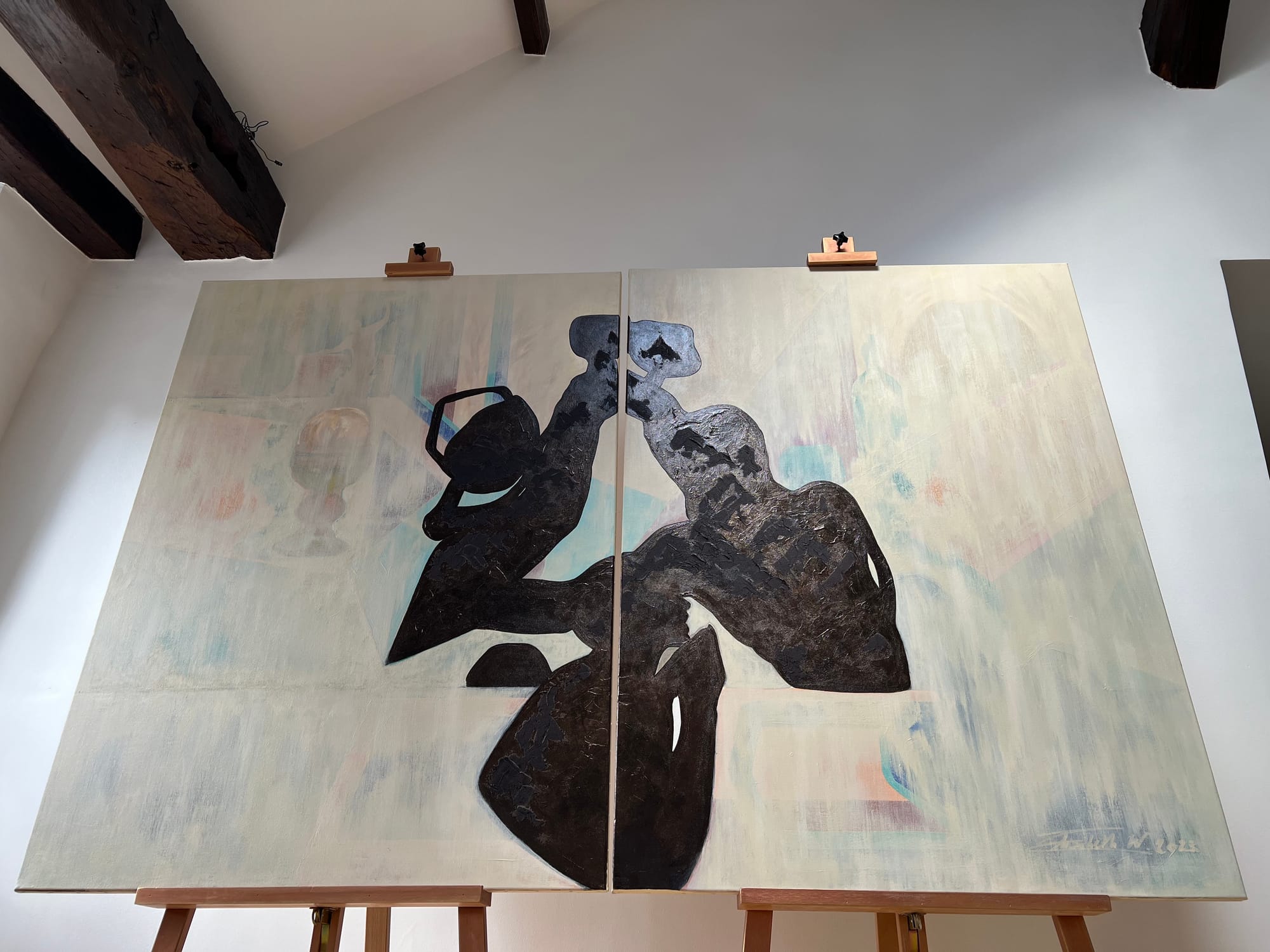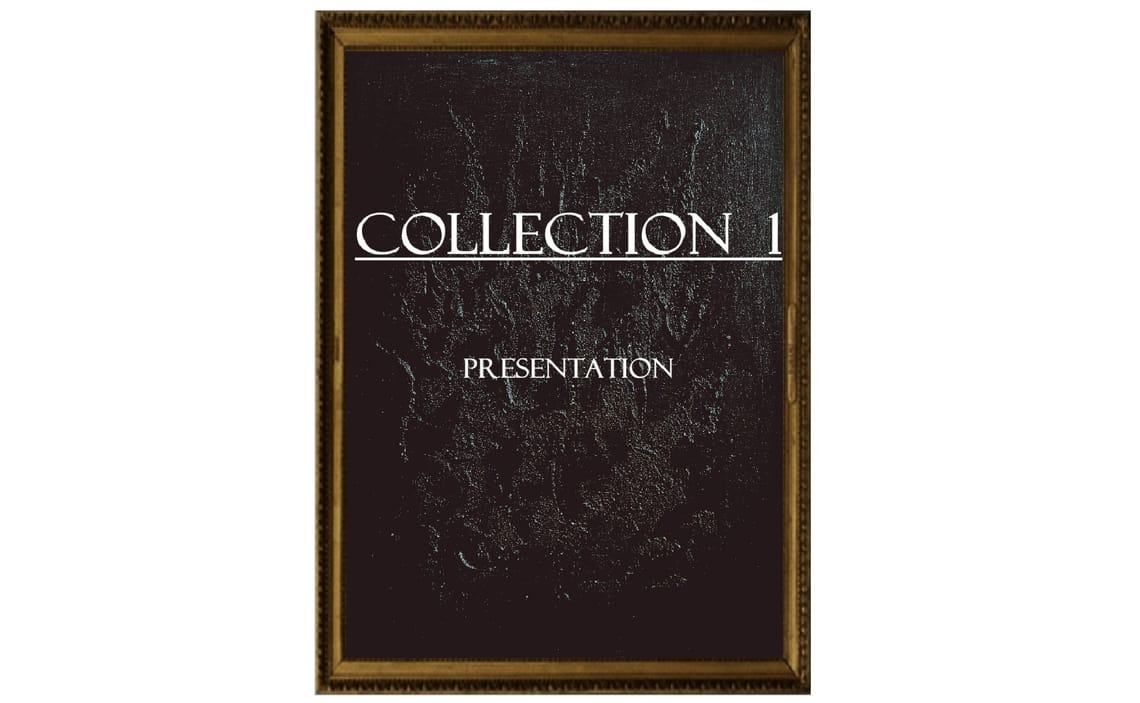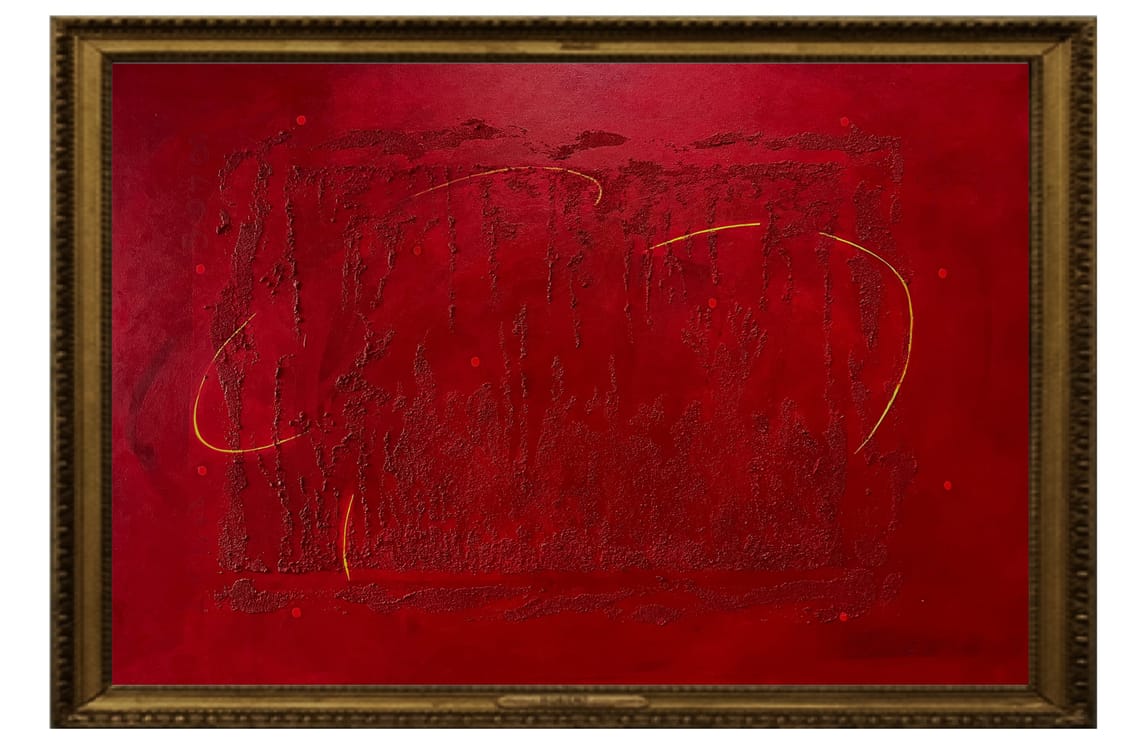The painting invites interpretation and appropriation, aiming for the viewer to feel, see, and obtain abundance.
The depicted figures symbolize intimacy, fulfilling relationships, celebration, and harmony. Despite earthly division, unity prevails in essence. Partial body representation signifies absence, reflecting on approaching the death of loved ones with joy rather than sorrow.
The roles of Receiver, Giver, or Entertainer are considered equal, emphasizing compatibility and harmony over hierarchy. Individual well-being is crucial for a thriving community, encouraging inspiration rather than comparison. Each person's unique perspective contributes effortlessly to group fullness and balance. As another form of absence, the painted body parts suggest a conscious discernment of what individuals bring to the table and encourage gratitude for the diverse perspectives we each offer.
The golden cup symbolizes the holy grail, bearing the word "name," signifying the ability to name Things transforms their essence. Biblical symbols like bread, apple, and wine represent nutrition, knowledge, and life force.
The conductor emerging from the flame suggests mastery in giving conscious meaning to the material realm, thus overseeing his life experience.
Wheat symbolizes abundance and richness on a material plane. Earthy colors ground energy, while muted colors convey softness and ease.
The once-visible pink and yellow banner reminisces old school lottery tickets.
The intentional act of covering up details, demonstrates the importance to simplify circumstances by highlighting essential elements. The beige strokes represent the limitless and unconditional source of positive outcomes abundance entails, emphasizing the giving and receiving of goodness independently from judgment.
Overall, the painting encapsulates a sense of unconditional security and freedom in being and doing, as the ultimate experience of abundance.
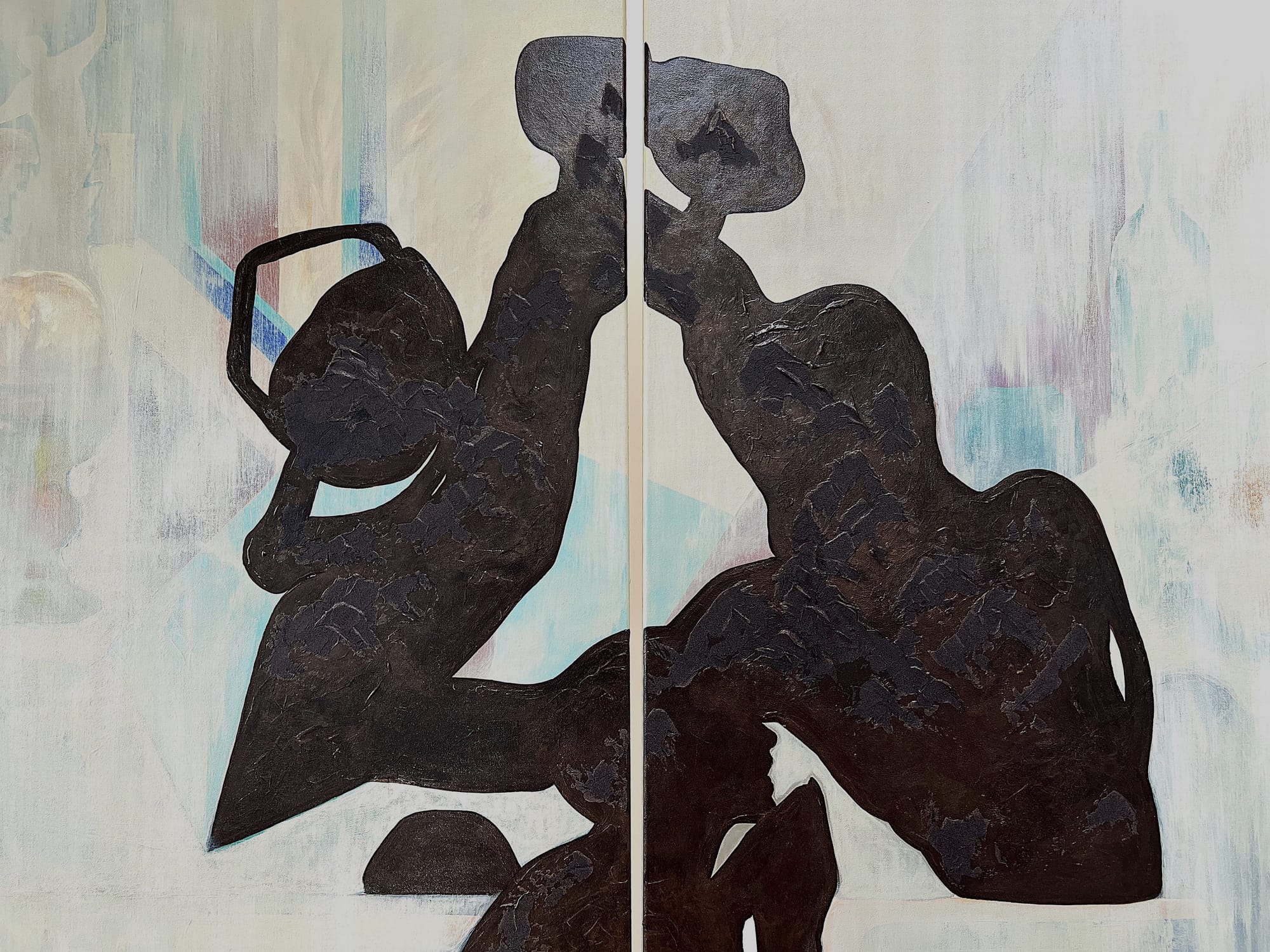
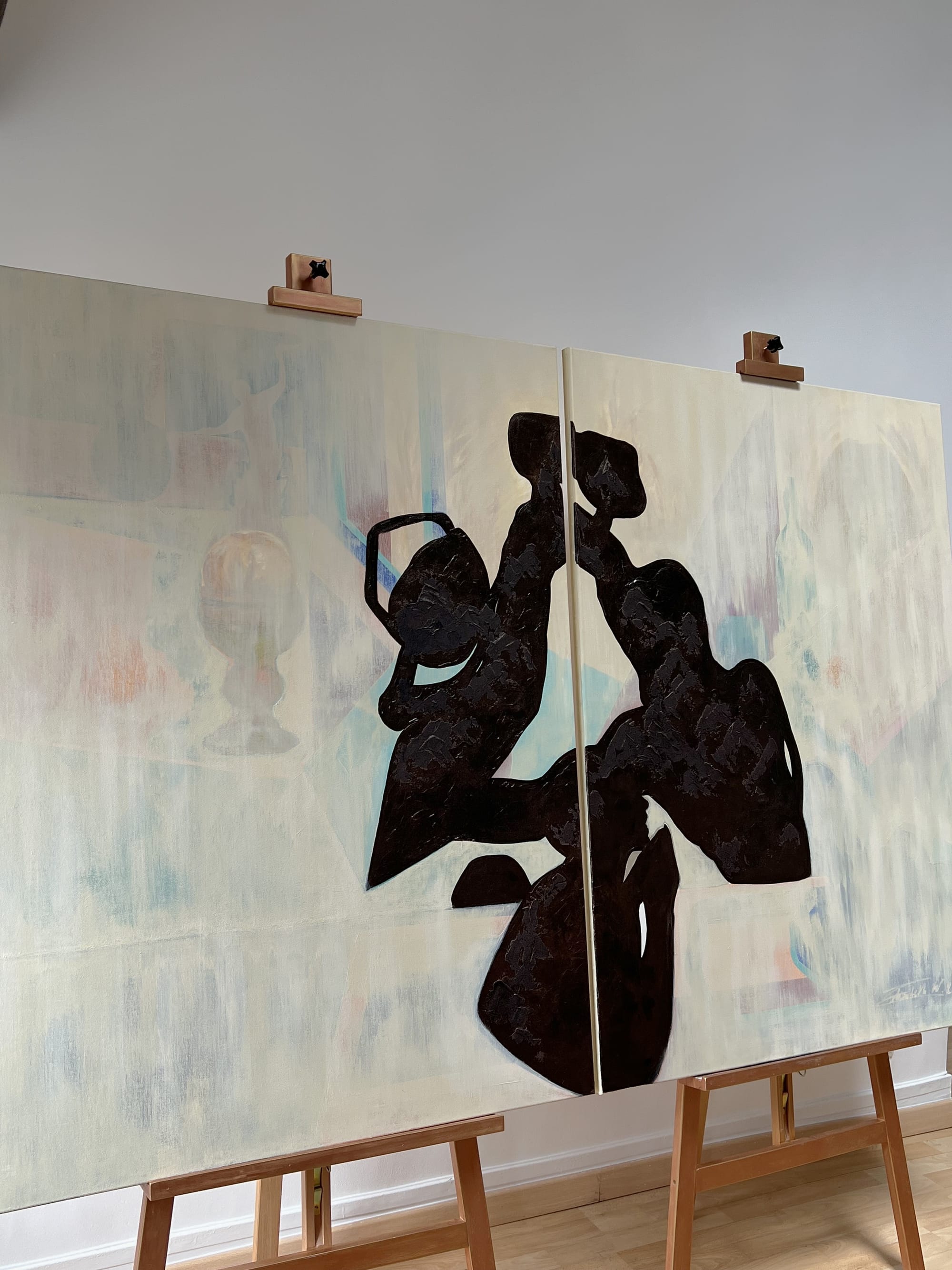
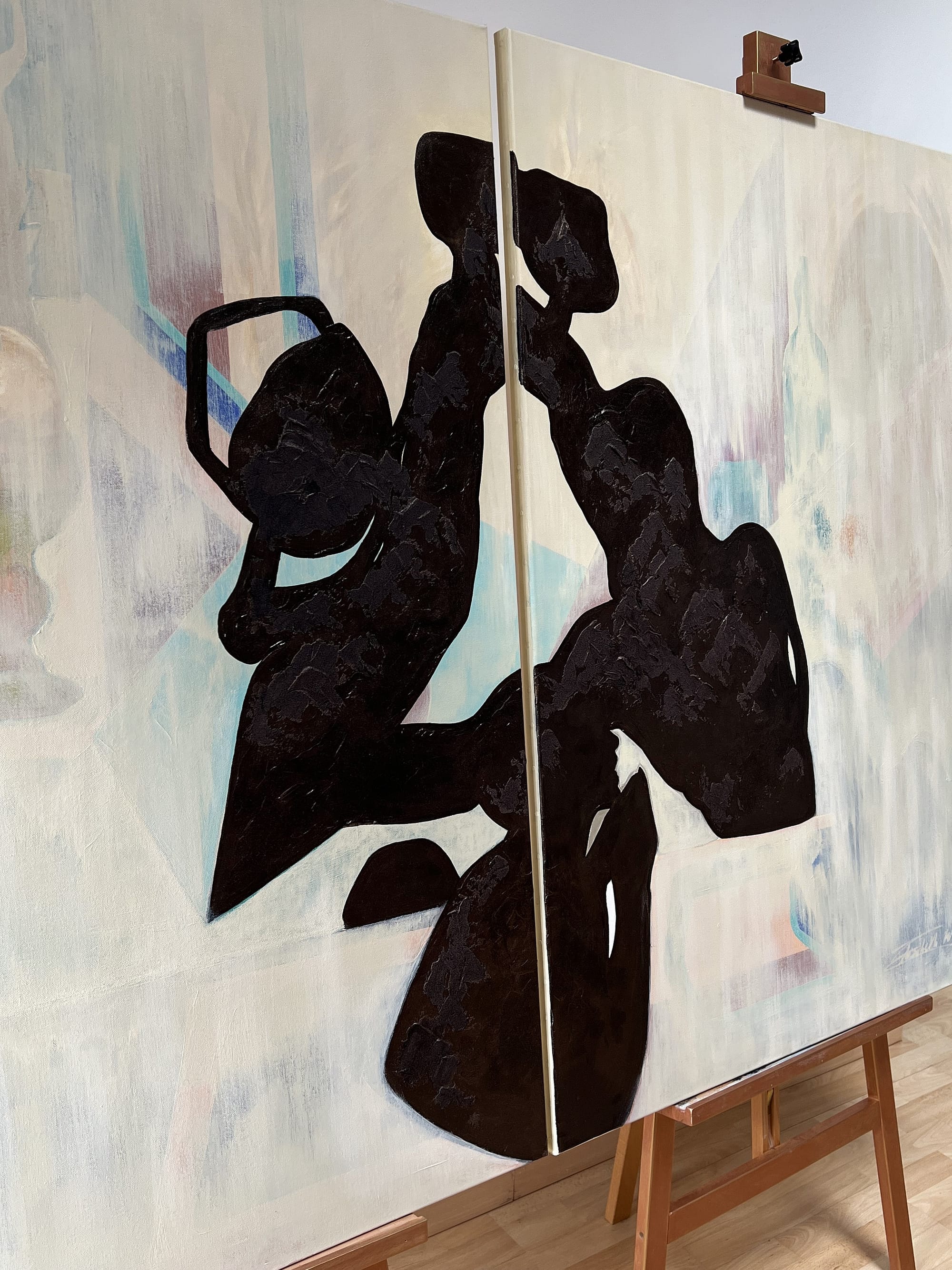
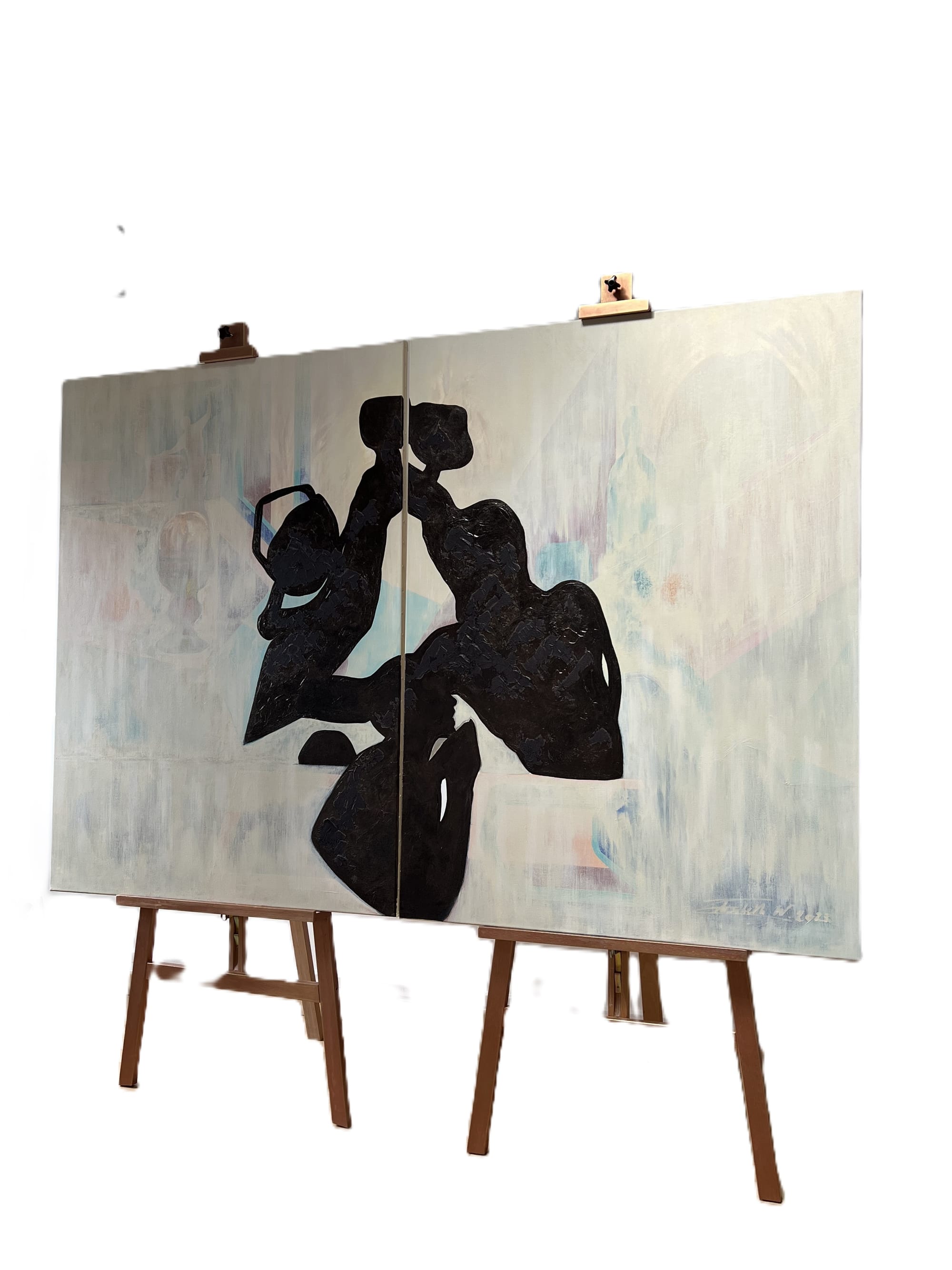
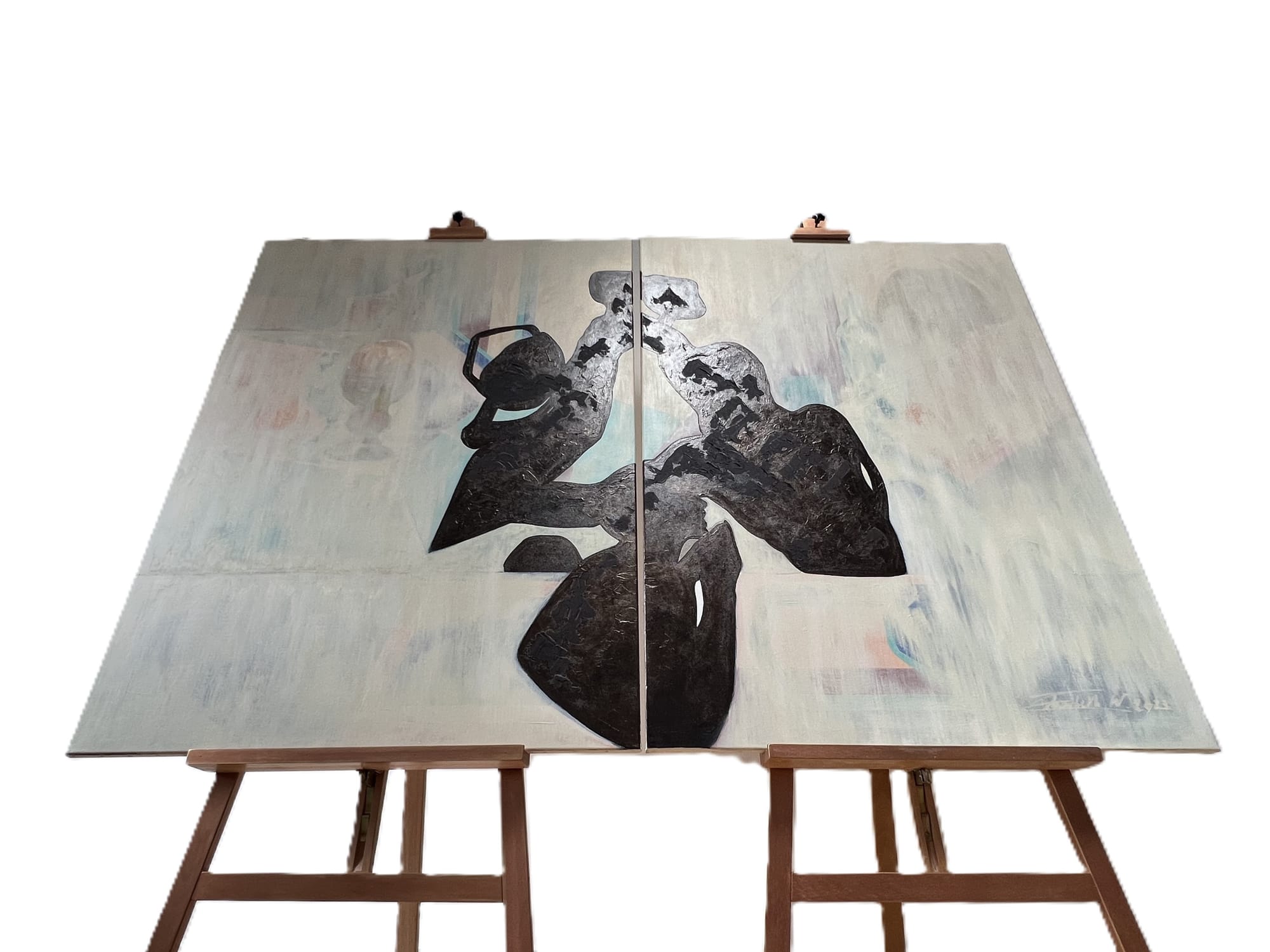
The process :

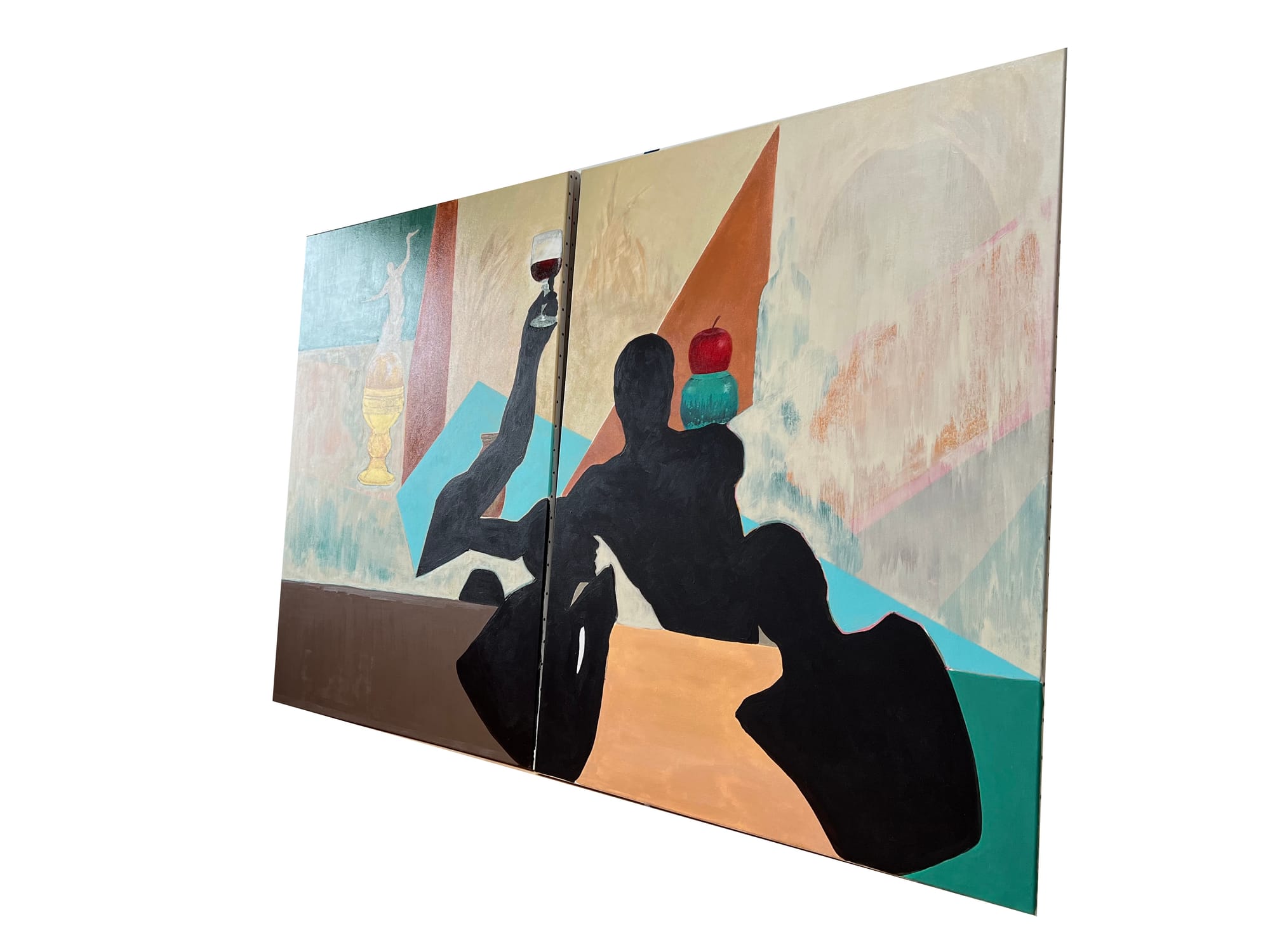
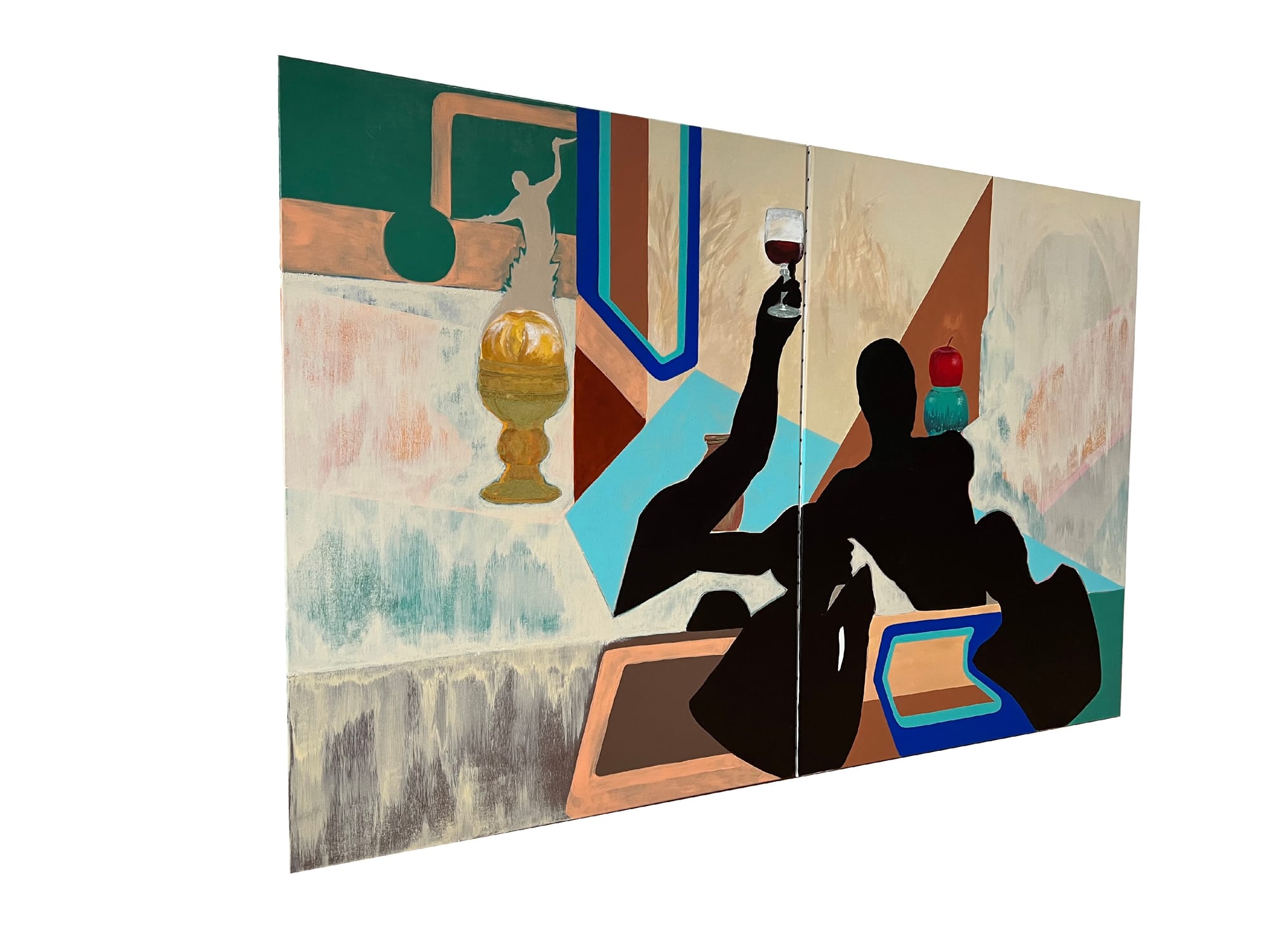
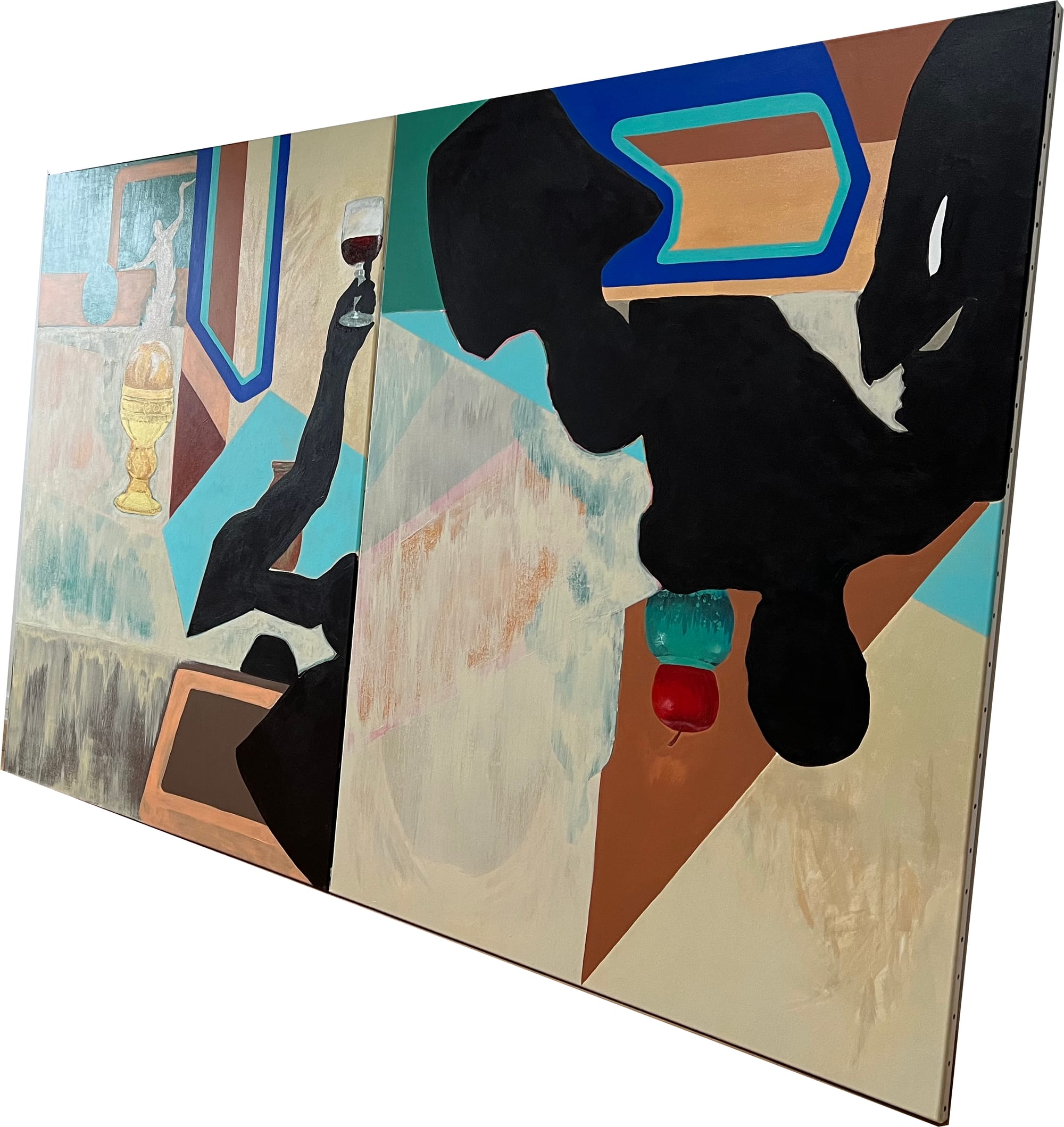

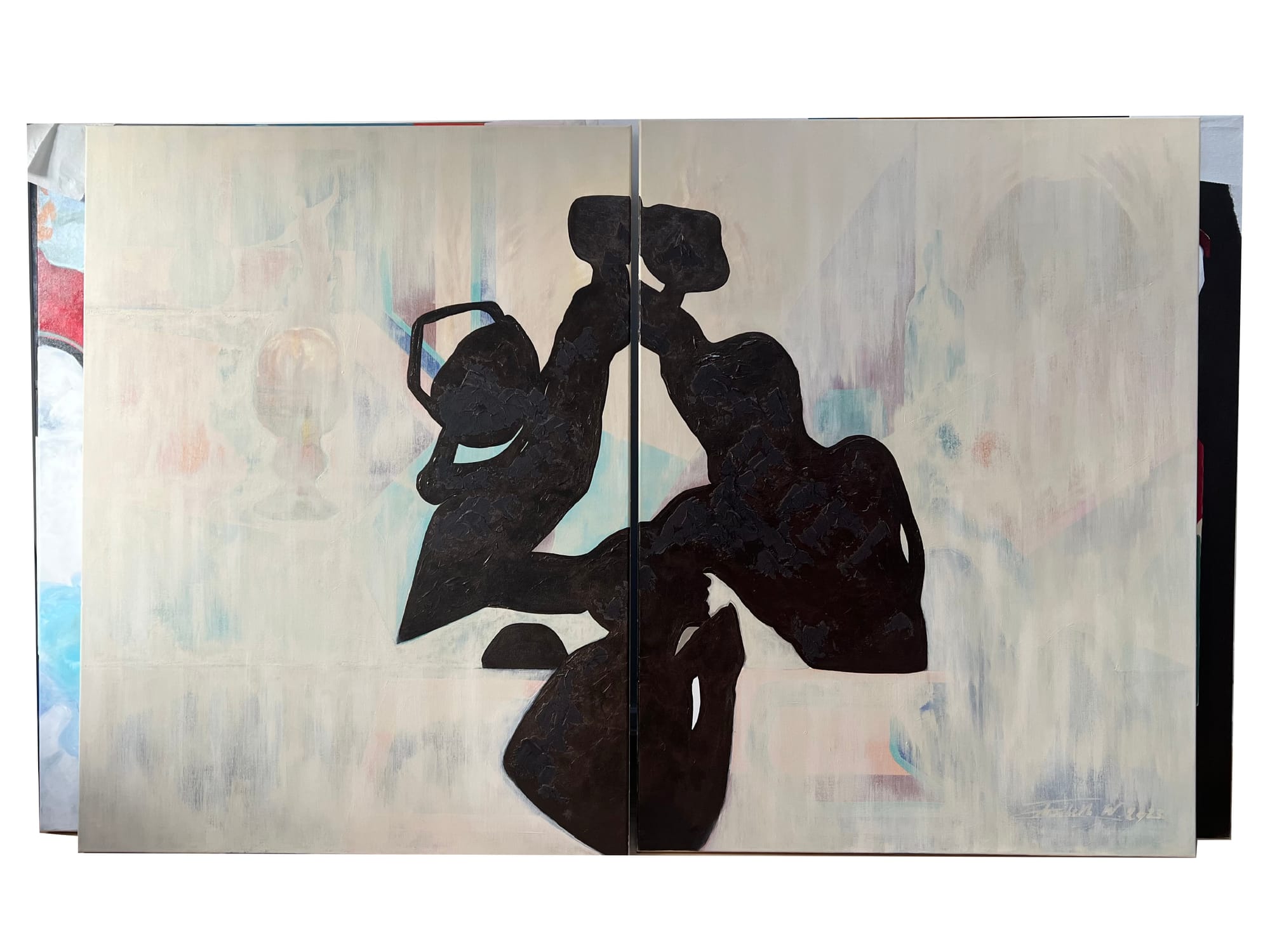
From left to right
Abondance
Abondance est une invitation à ressentir, voir et incarner la richesse — dans toutes ses dimensions : émotionnelle, relationnelle, matérielle et symbolique.
L’œuvre ne renie ni l’accumulation, ni le pouvoir, ni la sécurité. Au contraire, elle les intègre comme des fondations nécessaires, capables d’assurer une fluidité plus grande : celle du don, autant qu'un socle fertile permettant la libre expression de l’être.
Les figures humaines stylisées, rassemblées dans un mouvement harmonieux, évoquent la plénitude d’un groupe, la connexion d’individus vivants, porteurs d’un bien commun.
Leur présence fragmentée n’est pas une perte, mais une recomposition consciente : chacun offre ce qu’il peut, chacun participe à la forme d’ensemble.
Au centre, le ciment forme une chaîne montagneuse — symbole de stabilité, de continuité, de fondation durable.
Le cuivre, travaillé comme une neige éphémère, rappelle que même dans la certitude, une part de légèreté, de changement, de fragilité peut exister.
La vérité de l’abondance est double : elle se trouve à l’intérieur de soi, dans les relations sincères, et à l’extérieur, dans la matière, les moyens, le monde.
Abondance veut dire “en avoir assez pour partager” — et c’est ce surplus qui libère.
Le calice doré marqué “Name” symbolise le pouvoir de transformation par la parole.
Nommer, c’est structurer. Structurer, c’est donner sens.
Les symboles bibliques (pomme, pain, vin) renvoient à la connaissance, à la vitalité et à la nourriture — physique comme spirituelle.
Enfin, l’acte de recouvrir certains éléments par des voiles clairs traduit une intention : simplifier pour faire émerger l’essentiel, sans jamais effacer ce qui a été.
Le fond beige exprime une source continue, inconditionnelle, sans jugement.
Abondance, ici, devient état d’être : une liberté tranquille, une maîtrise joyeuse, et la sensation intime que l’on a déjà tout ce qu’il faut — et même un peu plus.
➤ Galerie
